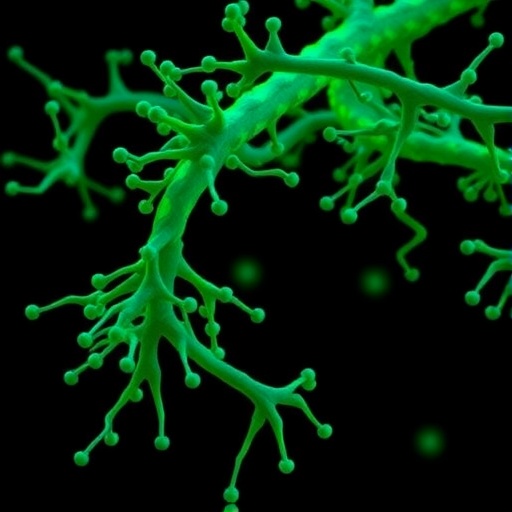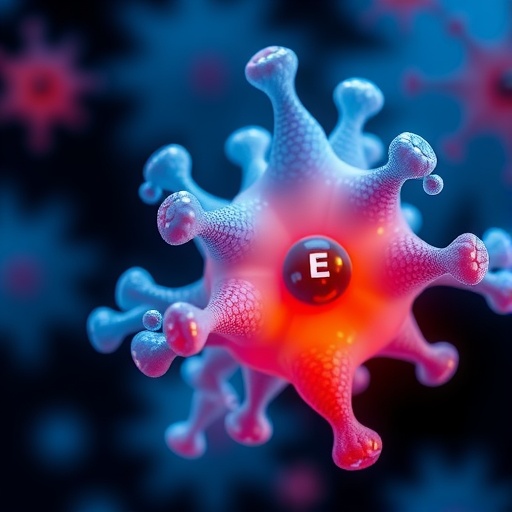HOXB13, a member of the B-class homeobox transcription factors, occupies a pivotal position in the orchestration of developmental gene networks. Traditionally recognized for its essential roles in embryogenesis and androgen-dependent organ development, HOXB13 has emerged as a critical player in oncogenesis, exhibiting a paradoxical duality as both oncogene and tumor suppressor. This dichotomous behavior is heavily dependent on the cellular context, interacting protein partners, and genetic alterations, making HOXB13 a fascinating subject of intense research across a multitude of human cancers.
At the transcriptional level, HOXB13 expression is tightly regulated by complex epigenetic mechanisms that can either potentiate or suppress its activity. In prostate cancer, for instance, BRD4, a bromodomain-containing protein, binds to distal enhancer regions, fostering the deposition of acetylated histone mark H3K27ac at the HOXB13 promoter. This epigenetic modification triggers HOXB13 overexpression, subsequently activating a cascade of genes involved in cell cycle progression and nucleotide metabolism, thus fueling tumor growth. Conversely, in cancers such as endometrial carcinoma and glioma, epigenetic repressors like EZH2 mediate H3K27 trimethylation (H3K27me3) and transcriptional repressors such as YY1 recruit HDAC4 to the HOXB13 locus, effectively silencing its transcription and lifting a crucial brake on cellular proliferation.
DNA methylation patterns add an additional layer of control over HOXB13 expression. Aberrant hypermethylation commonly observed in renal cell carcinoma and colorectal cancers leads to silencing of HOXB13, whereas focal hypomethylation in oral squamous cell carcinoma amplifies its transcriptional output. Notably, a recently characterized CpG island located approximately 4.5 kb upstream of the HOXB13 transcription start site serves as an epigenetic checkpoint, further illustrating the dynamic remodeling of chromatin states modulating HOXB13 activity in specific tumor microenvironments.
.adsslot_8UVLKNzd5S{width:728px !important;height:90px !important;}
@media(max-width:1199px){ .adsslot_8UVLKNzd5S{width:468px !important;height:60px !important;}
}
@media(max-width:767px){ .adsslot_8UVLKNzd5S{width:320px !important;height:50px !important;}
}
ADVERTISEMENT
Protein-level regulation of HOXB13 is equally complex and consequential. Post-translational modifications such as lysine acetylation and phosphorylation shape its stability and transcriptional activity. CREB-binding protein (CBP), an acetyltransferase, acetylates lysines 13 and 277 on HOXB13, which stabilizes the protein and enhances its ability to co-activate estrogen receptor signaling in breast cancer contexts. In contrast, mTOR kinase phosphorylates threonine and serine residues (Thr8, Thr41, Ser31), priming HOXB13 for SKP2-mediated ubiquitination and proteasomal degradation. Intriguingly, lysine-to-arginine mutations at acetylation sites create a constitutively active HOXB13 form strongly correlated with the emergence of castration-resistant prostate cancer, illustrating a fine-tuned balance between post-translational modifications and cancer progression.
HOXB13 exerts its oncogenic or tumor-suppressive functions largely through interaction with other pivotal proteins. Within prostate epithelium, HOXB13 forms heterodimers with the transcription factor MEIS1. This complex represses androgen receptor (AR) signaling by competing for chromatin binding sites and enhancing expression of tumor suppressors like Decorin. Germline mutations such as G84E, Y80C, and L144P disrupt this interaction, freeing HOXB13 to collaborate with AR splice variants like AR-V7, leading to activation of oncogenic zinc-finger transcription factors and driving prostate tumorigenesis. Other interactions include HOXB13 partnership with CBP/p300 in breast cancer to potentiate estrogen receptor pathways and cooperation with ALX4 in gastric cancer, promoting SLUG induction and facilitating epithelial-to-mesenchymal transition (EMT), a hallmark of metastatic progression.
Clinically, HOXB13 is already gaining traction as a diagnostic and prognostic biomarker. Immunohistochemical detection of HOXB13 reliably distinguishes cauda equina paraganglioma from ependymoma, and a combined staining panel using HOXB13 and p63 differentiates high-grade prostate carcinomas from urothelial carcinomas. Moreover, the ratio of HOXB13 to IL17B expression, known as the Breast Cancer Index, serves as a valuable predictor of late recurrence in estrogen receptor-positive breast cancer and informs decisions regarding the extension of tamoxifen therapy beyond the standard five-year regimen. Non-invasive diagnostic strategies also exploit urinary HOXB13 transcripts for early detection of prostate cancer, while tissue expression levels facilitate patient stratification for androgen receptor-targeted treatment or BET bromodomain inhibitor therapies.
Therapeutic targeting of HOXB13-mediated pathways reflects an emerging frontier in precision oncology. HDAC4 inhibitors, such as sodium butyrate, resuscitate HOXB13 repression in androgen receptor-negative prostate tumors, offering a potential route to overcome resistance. Small molecule BET inhibitors like JQ1 displace BRD4 from enhancer elements within the HOXB13 locus, curbing its overexpression. Epigenetic therapies targeting DNA methyltransferases reverse hypermethylation-induced silencing in colorectal cancers. Retinoic acid and EZH2 inhibitors reduce repressive H3K27me3 marks, reactivating HOXB13’s tumor suppressor functions. Additionally, disrupting interface proteins such as Decorin and CHD1 interrupts HOXB13’s oncogenic alliances with AR and MEIS1, attenuating castration resistance. Promising Phase II clinical trials combining BET with PI3K pathway inhibitors are underway, exploiting HOXB13 addiction mechanisms in metastatic castration-resistant prostate cancer.
The ethnic and geographic diversity evident in HOXB13 mutations importantly informs clinical screening and management strategies. The G84E founder mutation, present in roughly 3.5% of Finnish individuals, notably raises early-onset prostate cancer risk but is virtually absent in East Asian populations. Consequently, screening guidelines are tailored accordingly, recommending prostate-specific antigen (PSA) testing initiation at age 40 in G84E carriers. Multi-gene panels incorporating HOXB13 alongside BRCA2 and ATM mutations have improved risk stratification across heterogeneous populations, reflecting the move towards equitable precision medicine.
Advances in single-cell multi-omics and spatial transcriptomics promise to refine our understanding of HOXB13’s role within tumor microenvironments. These cutting-edge technologies will illuminate cellular heterogeneity and transcriptional dynamics at unparalleled resolution, enabling dissection of HOXB13-driven cancer networks and informing design of combinatorial therapies. Harnessing HOXB13’s multifaceted nature—balancing its tumor-promoting and tumor-suppressing roles—could revolutionize therapeutic paradigms and ultimately improve patient outcomes across diverse cancer types.
Subject of Research: Not applicable
Article Title: HOXB13 in cancer development: molecular mechanisms and clinical implications
News Publication Date: 9-Jun-2025
Web References: http://dx.doi.org/10.1007/s11684-024-1119-x
Image Credits: Jian Zhang et al.
Keywords: Health and medicine
Tags: BRD4 and HOXB13 interactionepigenetic regulation of HOXB13epigenetic repressors in cancerhistone modifications and cancerHOXB13 as an oncogene and tumor suppressorHOXB13 cancer researchHOXB13 gene expression dynamicsHOXB13 in endometrial carcinomaHOXB13 in gliomaHOXB13 in prostate cancermolecular mechanisms of HOXB13transcriptional control of HOXB13





